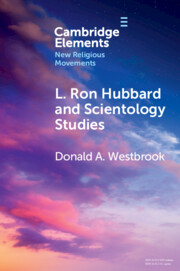Element contents
L. Ron Hubbard and Scientology Studies
Published online by Cambridge University Press: 17 June 2022
Summary
Keywords
- Type
- Element
- Information
- Online ISBN: 9781009032001Publisher: Cambridge University PressPrint publication: 14 July 2022
Bibliography
- 17
- Cited by



